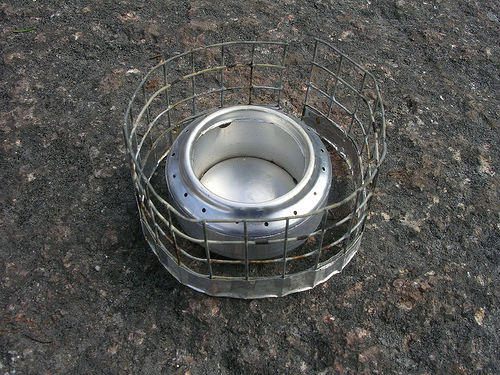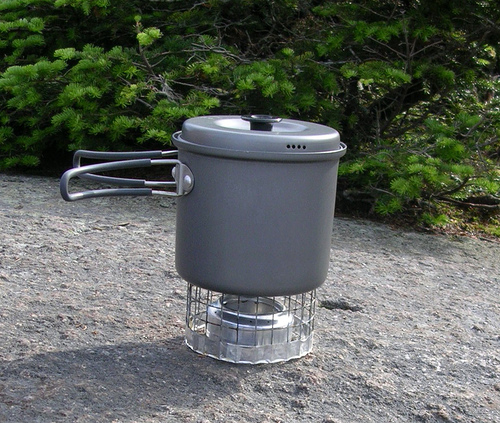
Now We're Cooking…
For the faithful converts of ultralight backpacking, the alcohol stove might just be the Holy Grail. Almost all of the long-distance hikers I know have long-since traded their clumsy Whisper Lites and wasteful Pocket Rockets for the stove that you can make in your basement. The alcohol stove goes by a variety of names, including pepsi can stove and beer can stove, depending on how it’s made, but the basic principle is the same. You cut the bottom off of two aluminum cans, fit them together, cut out a large hole for your fuel, and punch about fifteen little holes around the rim for the flame to escape. A metal stand, which you can also make yourself, holds your cookpot above the flame. A lot of people use pot cozies to continue cooking their food after the flame goes out so that they don’t waste fuel unnecessarily.
But the alcohol stove isn’t just a lighter alternative; it’s also a greener one. It runs on denatured alcohol rather than, say, isobutane-propane (which, when burned, is known to cause cancer, birth defects and other reproductive chaos), it uses recyclable materials, and you can make it yourself. For people like me, whose engineering skills are suspect, you can also buy them online at Anti Gravity Gear, Mini Bull Design, and Mo-Go-Gear. Sometimes you can find them on Ebay as well.
Alcohol stoves weigh as little as a half an ounce, plus the weight of however much fuel you carry. (Denatured alcohol is often sold in small quantities at outfitters and hardware stores in trail towns.) You won’t be making three course meals with this stove, but do you really want to lug all that food with you anyway?





